Since writing this post, I've aggregated a number of helpful Specific Carbohydrate Diet-related links, both internal and on other sites, on this dedicated SCD page.
I'll say this upfront: I have never been the dieting type. I'm pretty tiny, it's pretty much genetic, and I pretty much top out at about 5 lbs. over my fightin' weight of 104 lbs. B.G. (Before Gold's); I guess if I worked reeeeally hard at it now that I have some muscle on me, I might be able to make it to blood donor weight.
But I'd have to work really, reeeeeeeally hard at it, now that I'm on the first restricted food plan of my life: the Specific Carbohydrate Diet, or SCD. I've been following it with "fanatical adherence" for over two years now, ever since I was released from my 11-day incarceration in the IBD ward of Cedars-Sinai in Los Angeles.
That's one of the crazy things about the SCD, as its major proponent, Elaine Gottschall, B.A., MSc., has emphasized repeatedly on the many Listservs and bulletin boards she still frequents for sufferers of Crohn's disease, ulcerative colitis (UC) and autism, in order to work, the diet must (at least, initially) be followed with fanatical adherence. As in, no "just this one cupcake" or "just this one beer" or even "just this one sip of Coca-Cola", you either follow the SCD 100% or she very kindly but firmly insists that you are not actually following the SCD.
Elaine Gottschall stumbled upon the precursor to the SCD when her young daughter was diagnosed with UC. After dragging her from specialist to specialist, she finally met Dr. Valentine Haas, who put Elaine's little girl on a diet he'd found successful in alleviating a number of gastrointestinal disorders. Her progress was slow but steady; to this day, some 40 years later, she remains in remission (and on a modified version of the SCD). Elaine was so impressed by this remarkable recovery that she went back to school to further research the diet. She subsequently wrote a book about the SCD, outlining the science behind it and including an extensive list of allowed and disallowed foods, as well as a batch of recipes that she had come up with over the years.
Very simply, the premise behind the SCD is this (from Seth Barrows's site):
The premise of the diet is that damaged intestinal walls and bacterial overgrowth are a part of a vicious cycle that wreaks havoc with the body's health and immunity. The diet restricts the types of carbohydrates that feed these pathogens, thereby restoring the body's inner ecology. The SCD diet is very similar to a Paleolithic diet, except it allows the consumption of certain legumes, fermented dairy products, and dry alcohol.
The SCD also resembles the Atkins diet in certain respects (although as SCDers are always quick to point out, unlike Atkins, you can be on the SCD and eat a lot of carbs. You just can't eat any of the good ones). The diet basically excludes all disaccharides and polysaccharides, which pretty much in turn excludes all processed foods, since they rely heavily on sugars and starches.
So for 2+ years, I've had no ice cream, sherbet, sorbet, cake, cookies, cupcakes, candy, pasta, pizza, rice, tofu, potatoes, pancakes, waffles, syrup, bread, bagels, crackers, chips, gum, soft drinks, Russian/French/Thousand/Ranch dressing, ketchup, coffee, beer or chocolate. And that's a partial list.
But for most of the past 2+ years, I've been healthy. I've put back the weight I lost in my initial Crohn's onset and actually gained enough energy to start a weight-training program. I've been tapering off my meds successfully and plan to be off them completely by early 2005.
My doctors still think diet has had nothing to do with my recovery. This is a fairly standard reaction, I'm told, which is sad. Out of all the doctors I've met since I was diagnosed, only one was even aware of the diet, and as he said, "It's really hard to follow and we can't explain the science so we don't really recommend it to most of our patients."
So if you know of someone with Crohn's, UC, IBS, candiasis, celiac disease, cystic fibrosis, or even a parent of an autistic child (there's an incredibly brave and intrepid parents' SCD group which Elaine has lent a great deal of support to), please send them here. Or here. Or here.
The SCD can't cure everyone, but it can't cure anyone who doesn't know about it.
xxx
c
UPDATE 3/4/11: I fell off the SCD wagon roughly two months after writing this post, and did not get back on (with fanatical adherence) until September of 2010, which I did through the aid of hypnotherapy. (The hypnotherapist, James Borrelli, cured my wandering eye for carbs in one session. WELL worth it.) While I can't blame falling off the diet for the flares I suffered afterwards, there are many, many things that can trigger a Crohn's flare, I know that I feel better, look better, maintain a healthier weight and have way less G.I. distress (not to mention much less stinky gas) when I follow SCD 100%.










 Two of the greatest things I ever got out of any relationship came from my marriage: an introduction to honest-to-God, Italian-American "gravy", as my former in-laws called it, (or "red lead" as Tony Soprano calls it) and to the Chicago-style giardinera that goes so perfectly with it.
For the uninitiated, giardinera (pronounced "jar'-din-AIR" if you're from Chicago) is basically chopped vegetables and spices either marinated in oil or picked in vinegar.
Two of the greatest things I ever got out of any relationship came from my marriage: an introduction to honest-to-God, Italian-American "gravy", as my former in-laws called it, (or "red lead" as Tony Soprano calls it) and to the Chicago-style giardinera that goes so perfectly with it.
For the uninitiated, giardinera (pronounced "jar'-din-AIR" if you're from Chicago) is basically chopped vegetables and spices either marinated in oil or picked in vinegar. While I'm new at this whole blogging thing, I think it's safe to say that "Why Blog?" is a perennial question amongst bloggers. And I include the variations on this, such as: "Why am I blogging about this?" Or better yet, "Why am I blogging about this?" Who am I to be writing things down and throwing them out there for everyone, or no one, to see?
It's a hot question in the blogosphere lately. Hugh MacLeod
While I'm new at this whole blogging thing, I think it's safe to say that "Why Blog?" is a perennial question amongst bloggers. And I include the variations on this, such as: "Why am I blogging about this?" Or better yet, "Why am I blogging about this?" Who am I to be writing things down and throwing them out there for everyone, or no one, to see?
It's a hot question in the blogosphere lately. Hugh MacLeod 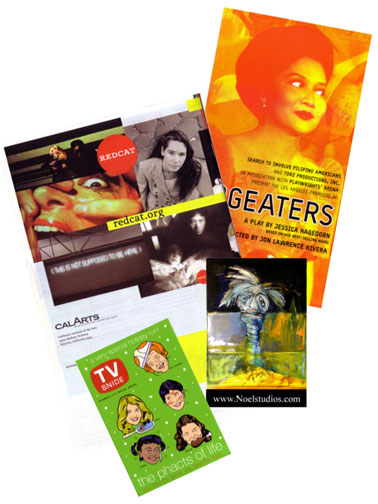 One of my continual frustrations as a theater rat with a scrabbly foot in the design world is the unforgivable lack of pretty in most show flyers. They'll pay the lighting designer, they'll pay the costume designer, they'll sure as shit pay the director, they'll get everything on stage looking Sunday-go-to-meetin' purty, and then crap all over themselves with an ill-conceived, poorly designed flyer.
It's like my crazy Polish art teacher whined about back in silkscreen class: the packaging on materials being sold to artists is among the dullest and horsiest design there is. Ah, sweet irony.
One of my continual frustrations as a theater rat with a scrabbly foot in the design world is the unforgivable lack of pretty in most show flyers. They'll pay the lighting designer, they'll pay the costume designer, they'll sure as shit pay the director, they'll get everything on stage looking Sunday-go-to-meetin' purty, and then crap all over themselves with an ill-conceived, poorly designed flyer.
It's like my crazy Polish art teacher whined about back in silkscreen class: the packaging on materials being sold to artists is among the dullest and horsiest design there is. Ah, sweet irony. 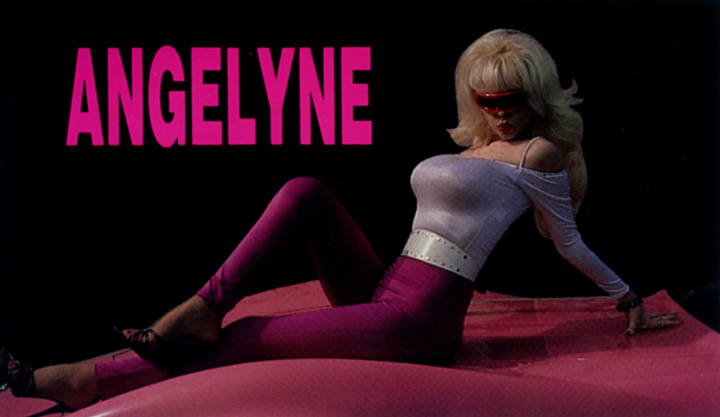 Okay, I've actually got some people reading this thing, and apparently, they're not locals (one's from Germany, I think, and the other from Canada) because if they were, they'd sure as shootin' know who
Okay, I've actually got some people reading this thing, and apparently, they're not locals (one's from Germany, I think, and the other from Canada) because if they were, they'd sure as shootin' know who 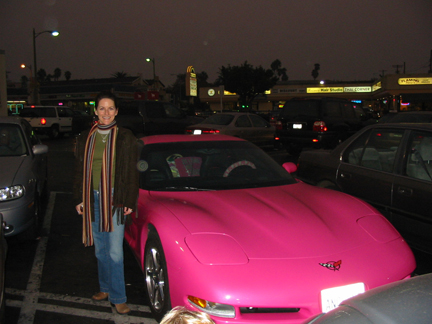
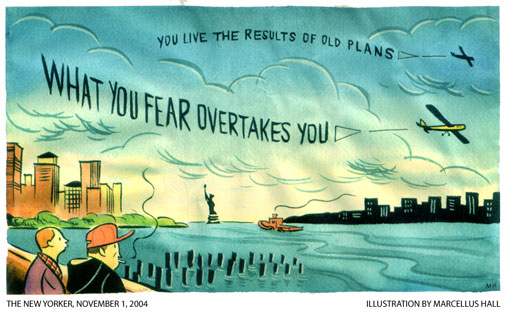
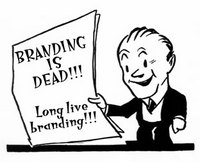 Back in the go-go '80s, my art director and I made silk purses out of some serious sow's-ear assignments and so were let into the inner sanctum: pitching spots for the second pool of a wildly successful TV campaign for the agency's big, fat American car account.
Back in the go-go '80s, my art director and I made silk purses out of some serious sow's-ear assignments and so were let into the inner sanctum: pitching spots for the second pool of a wildly successful TV campaign for the agency's big, fat American car account.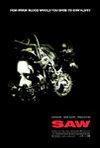 I love scary stuff, but I am a big baby. My workaround is to see all scary movies early enough in the day that there is still loads of daylight to wash away the creepy.
I love scary stuff, but I am a big baby. My workaround is to see all scary movies early enough in the day that there is still loads of daylight to wash away the creepy.